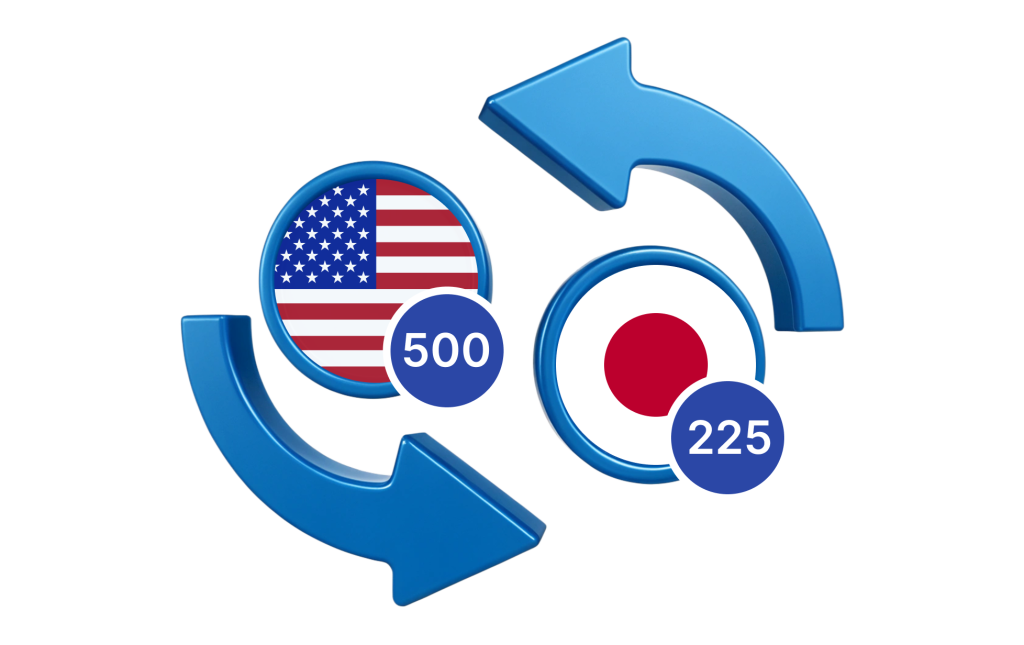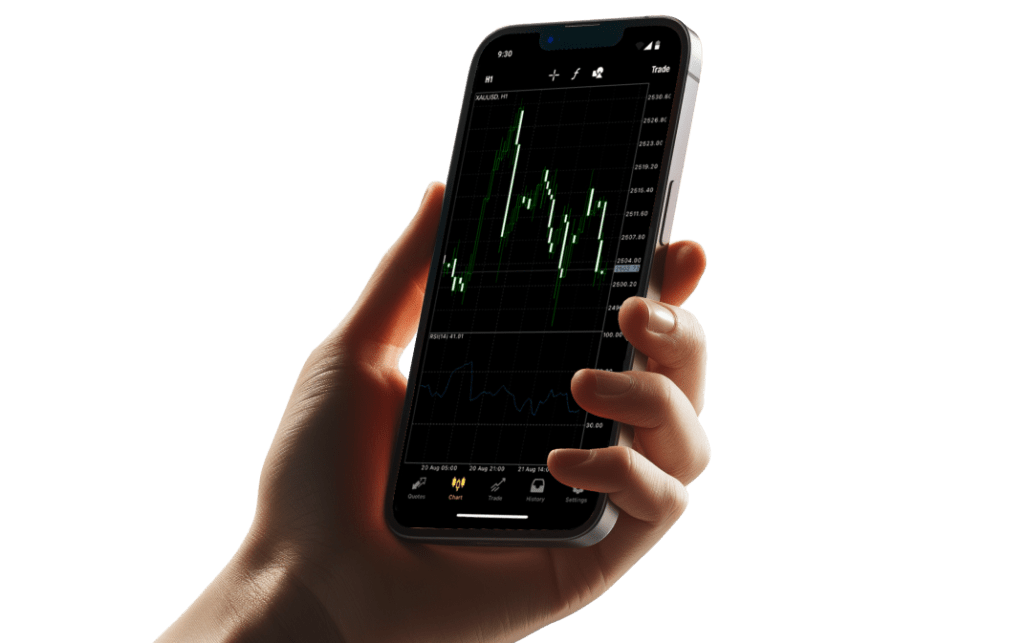Trade indices
with unbeatable conditions
Master the market with tools and features
aligned with your trading approach.

Why choose JMarkets for trading indices
From Japan’s Nikkei 225 to the US S&P 500, access the world’s leading indices with the support you need to succeed in global markets.
Wide range of indices
Invest in popular indices like Nikkei 225, S&P 500, Dow Jones, NASDAQ, and FTSE 100 to expand your portfolio and trading potential.
Fast withdrawals
Withdraw funds quickly and easily. Select from multiple payment options and enjoy swift approval of your requests.
Low and stable spreads
Experience stable trading even in volatile times, with spreads starting from 0.0 pips on all market indices.
Ultra-fast execution
Experience rapid execution with ultra-fast order speeds to stay ahead in fast-paced trading.
Slippage protection
Trade confidently with slippage protection that guarantees your trades are executed at the anticipated prices.
Trade on any device
Access the world’s most popular trading platform, MetaTrader 4/5, from your desktop, browser, or mobile.
Spreads and swaps for indices market
Avg.spread
pips
Commission
per lot/side
Margin
1:3000
Long swap
points
Short swap
points
Stop level*
pips
Standard
Indices
Indices market conditions
Access a diverse range of global indices with JMarkets — from well-established multinational conglomerates to dynamic small-cap stocks.
Trading hours
| Instrument | Trading hours | Daily break |
| AU200, DE40, EU50, FR40, HK50, JP225, UK100, US100, US30, US500, CHA50 | Monday 01:02 – Friday 23:59 | 00:00 – 01:01 |
| ES35 | Monday 09:02 – Friday 20:59 | 21:00 – 09:01 |
All timings are in server time (GMT+3).
Average spreads
Spreads in the indices market are variable and can fluctuate. The spreads listed above are averages based on previous trading days. For the most up-to-date spreads, please refer to our platform.
During periods of low liquidity, such as during daily breaks, spreads may widen and return to normal once market conditions stabilize.
Our best spreads are guaranteed on the Raw Spread account, starting with as low as 0.0 pips.
Swap-free trading
A swap is an interest fee applied to trading positions left open overnight. Swap rates differ between various trading trading and are applied at 22:00 GMT+3 daily, excluding weekends, until the position is closed. On Wednesdays, swaps are tripled to cover the weekend’s funding costs.
For instruments marked as “Extended Swap-free available” in the table, you won’t incur any swap charges if your account is swap-free.
All customer accounts, regardless of the country, are automatically granted swap-free status.
Stop level
The stop level is the minimum acceptable distance between the desired position opening price and the current (market) price when setting a pending order (Stop Loss, Take Profit, Buy/Sell Stop, Buy/Sell Limit). The stop level helps reduce the risk of price slippage during periods of volatility and ensures more reliable execution of pending orders.
Note that the stop level values provided in the table are flexible and might not be applicable for traders that use specific high-frequency strategies or Expert Advisors.
Fixed margin requirements
For trading indices, leverage is set at 1:500 for US30, US500, and US100, while all other indices maintain a leverage of 1:200.
Daily margin requirements for indices differ depending on the specific index. You can find the full list of detailed margin requirements for indices here.
MetaTrader mobile apps
Access MT4 and MT5 platforms on your Android or iOS device — trade on the go, be in line with the market, and never miss a thing.

Frequently asked questions
What are indices?
Indices (plural of “index”) measure the performance of specific stock market sectors. They reflect collective price movements of grouped stocks, indicating market trends.
When trading indices, you trade CFDs based on the index’s value rather than owning stocks. Dividend adjustments may apply during dividend dates and are credited to your trading account.
What are the 3 biggest indices?
The three most significant indices are:
- S&P 500 (US500), representing 500 large US companies.
- Dow Jones Industrial Average (DJIA), reflecting 30 major US corporations (US30).
- Nasdaq Composite (US100), heavily influenced by technology stocks.
What are the advantages of trading CFD indices vs. investing in index funds?
Trading stock index derivatives, like futures and options, offers benefits like:
- Leverage — control larger positions with less capital.
- Profit in both markets — go long or short to benefit from rising or falling markets.
- Flexible strategies — use CFDs for hedging or short-term opportunities.
- Margin trading — trade with a fraction of the capital required for direct investing.
- No ownership — avoid management fees and administrative tasks tied to owning assets.
When is the best time to trade indices?
Optimal trading times align with the trading hours of the underlying stocks:
- US Indices (e.g., US500, US30) — Monday to Friday, 16:35 to 22:59 (GMT+3).
- European Indices (e.g., EU50, DE40) — Monday to Friday, 10:05 to 18:29 (GMT+3).
Asian Indices:
- Japan 225 Index (JP225) — Monday to Friday, 01:05 to 23:55 (GMT+3).
- Hong Kong 50 Index (HK50) — Monday to Friday, 03:20 to 17:40 (GMT+3).
These periods correspond to the active trading sessions of the respective markets, providing higher liquidity and potentially more favorable trading opportunities.
What indicators can I use on an index chart?
You can use a variety of technical indicators on an index chart to analyze trends, momentum, and market conditions. Some of the most common ones include:
- Moving Averages for trend detection.
- Relative Strength Index (RSI) to identify overbought or oversold conditions.
- Bollinger Bands for volatility analysis.
- MACD (Moving Average Convergence Divergence) to spot buy or sell signals.
These indicators can be used individually or in combination to build a more comprehensive analysis of index movements.